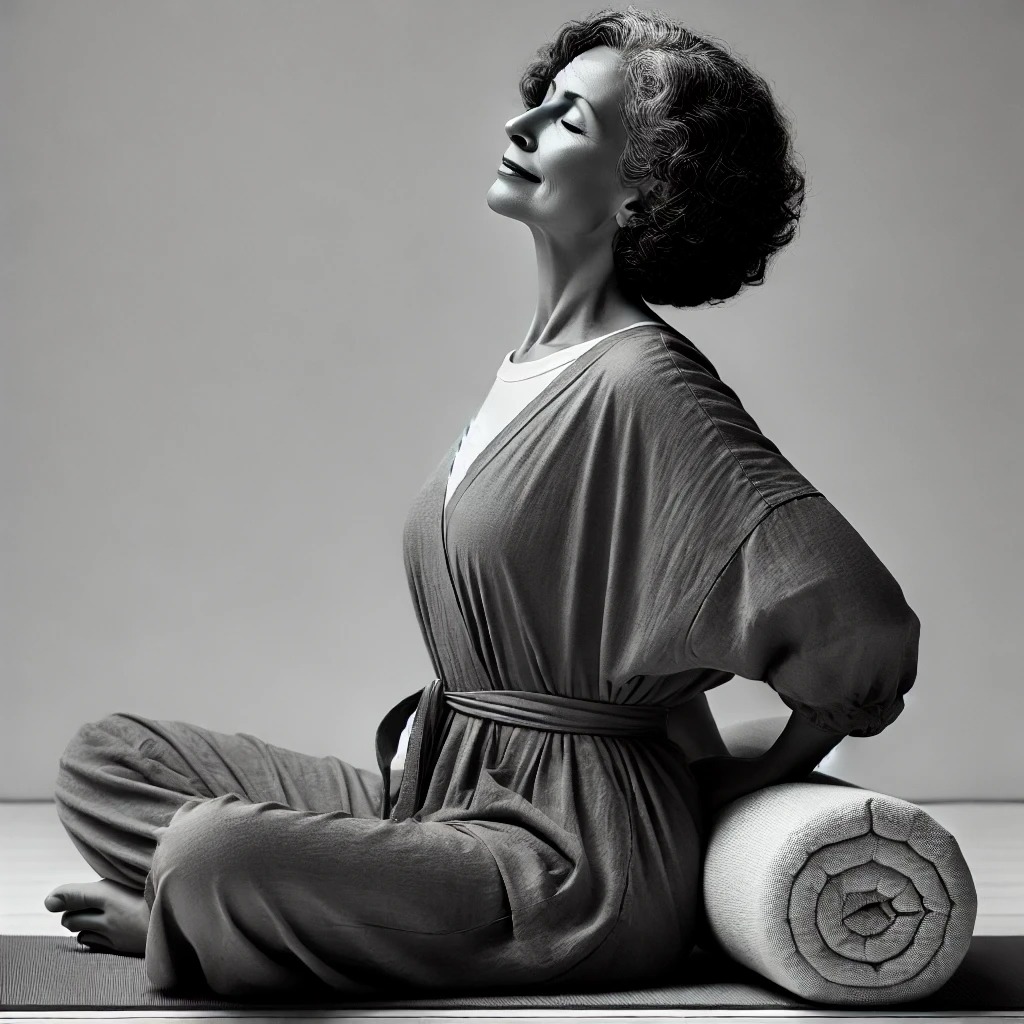Restorative Yoga Poses For Back Pain – Techniques to Soothe Discomfort and Promote Wellness
Back pain is a pervasive issue that can affect anyone, regardless of age or lifestyle. Many individuals seek alternative therapies to manage their discomfort, and restorative yoga has emerged as a powerful solution. This practice focuses on gentle, supportive poses designed to relax the body and mind, making it an ideal choice for those struggling with back pain. In this blog, we will explore effective restorative yoga poses for back pain that can help soothe discomfort and promote healing.
One of the cornerstones of restorative yoga is the use of props, such as bolsters, blankets, and blocks,
Supported Child’s Pose
Supported Child’s Pose is a fantastic starting point for anyone seeking relief from back pain. This gentle forward bend and deep hip stretch, creates space in the lower back, encouraging relaxation. As you breathe deeply, allow your body to sink into the support, letting go of tension and stress. Practicing Supported Child’s Pose regularly can significantly help in alleviating discomfort, fostering a sense of calm and increase flexibility in the hips.
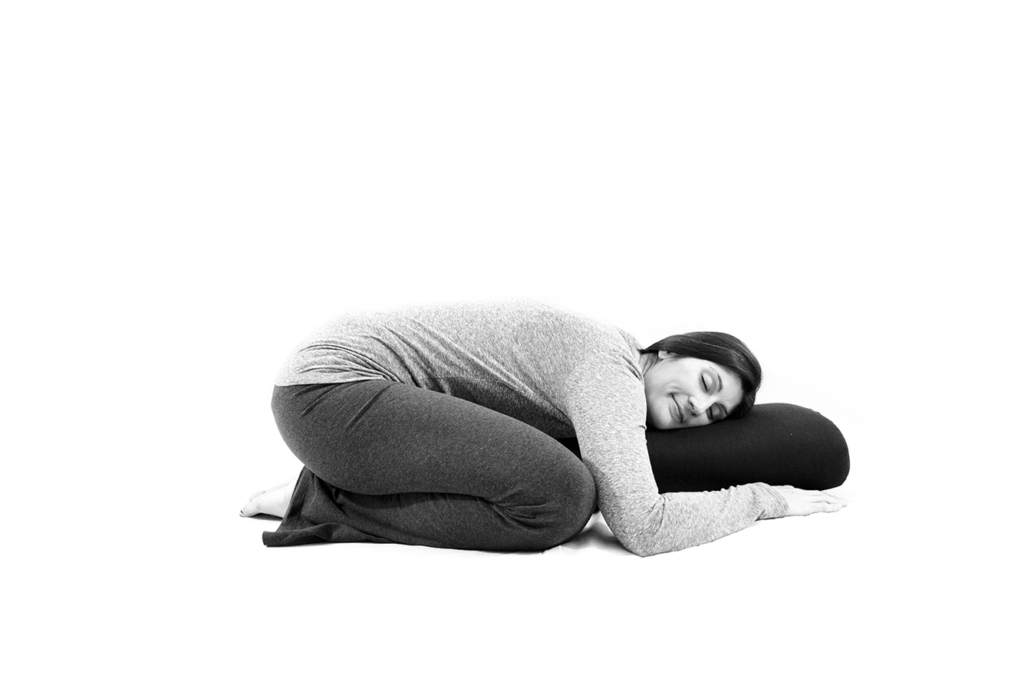
Supported Child’s Pose. Photo credit: Yoga for Low Back and Hip Health by Cyndi Roberts
Supported Bridge Pose
Supported Bridge Pose is also beneficial for back pain relief. By elevating your hips with a bolster, you can create a gentle arch in your lower back without straining. This position encourages blood flow to the spine while opening the chest and shoulders. As you relax in this pose, focus on your breath, allowing each exhale to release tension in your back. Over time, practicing Supported Bridge Pose can improve spinal alignment and promote overall back health.
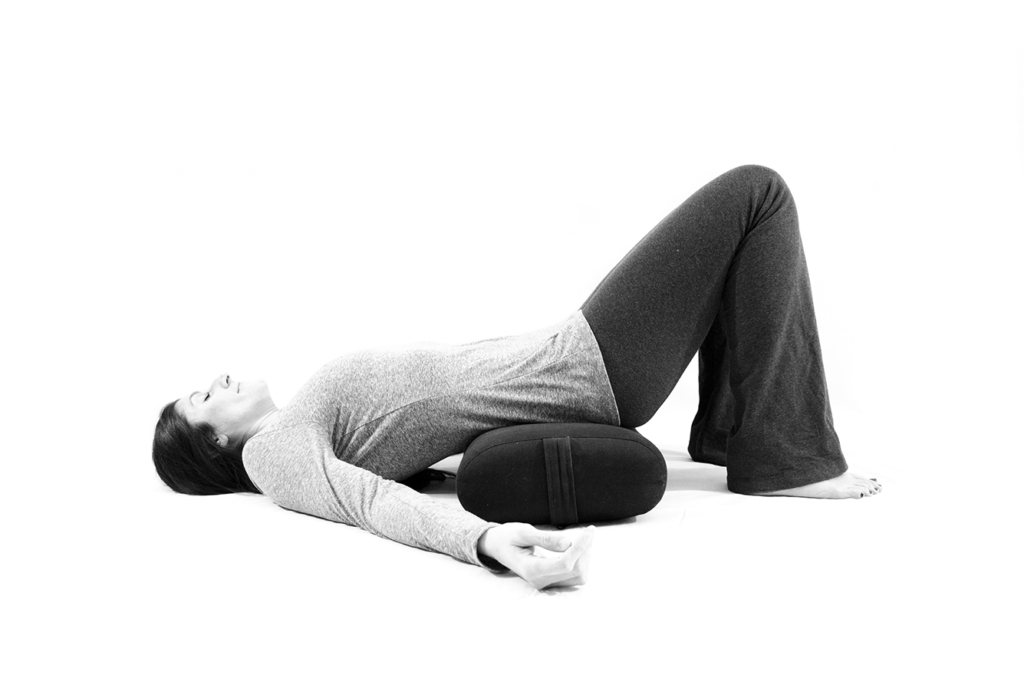
Supported Bridge Pose. Photo credit: Yoga for Low Back and Hip Health by Cyndi Roberts
Reclined Three-Part Hamstring Stretch
For those looking to relieve tension in the hamstrings, Reclined Three Part Hamstring Stretch is an excellent choice. Together, these postures gently stretch the spine and all three parts of the hamstrings, promoting flexibility. Deep breathing provides a calming effect and natural reduction of tension throughout. Though the arms are working here, allow your head and neck to relax into the support to add a sense of release throughout the upper body.
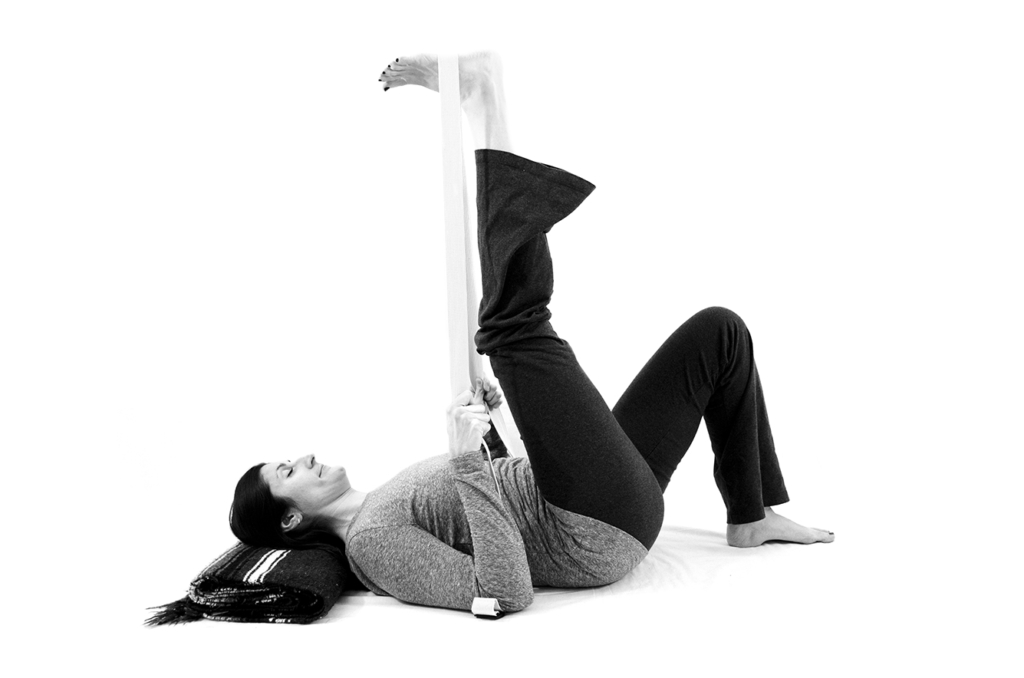
Reclined Three Part Hamstring Stretch – Part One. Photo credit: Yoga for Low Back and Hip Health by Cyndi Roberts
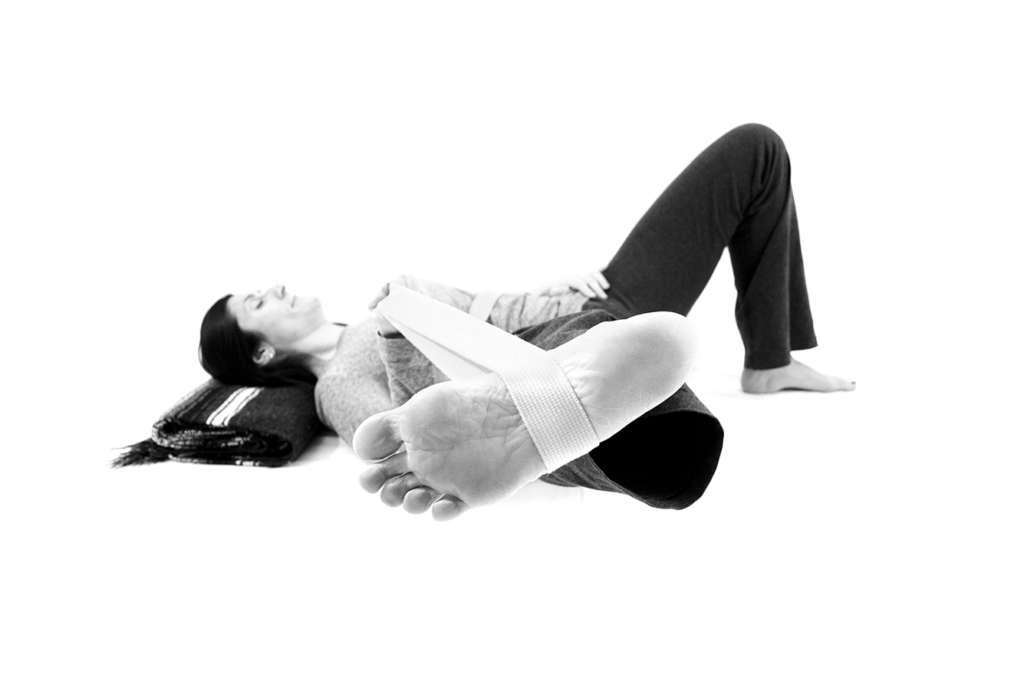
Reclined Three Part Hamstring Stretch – Part Two. Photo credit: Yoga for Low Back and Hip Health by Cyndi Roberts

Reclined Three Part Hamstring Stretch – Part Three. Photo credit: Yoga for Low Back and Hip Health by Cyndi Roberts
Becoming Aware of the Breath
Becoming Aware of the Breath and incorporating deep belly breaths during restorative yoga is essential for reducing back and hip pain. This practice helps activate the body’s relaxation response, promoting a sense of calm and reducing tension in the muscles surrounding the spine and hips. Deep belly breathing encourages the diaphragm to engage fully, which enhances oxygen flow to the body and aids in the release of built-up stress and tightness. As you focus on your breath, you create a mindful connection with your body, allowing you to tune into areas of discomfort and facilitate healing. This heightened awareness not only fosters physical relaxation but also calms the nervous system, helping to alleviate pain and improve overall mobility in the affected areas. It’s also a terrific practice throughout your day!
To maximize the benefits of restorative and gentle yoga for low back and hip pain relief, consistency is key. Also having a dedicated yoga space and yoga props like bolsters, blankets or even a cozy heated sheepskin mat for practice are not only supportive, but also ideal for accountability. Aim to dedicate a few minutes each day to these gentle poses, allowing your body to relax and unwind. Pair your practice with mindful, intentional breathing and visualization techniques to enhance the healing process. Give the to-do list a rest! By committing to a regular restorative yoga routine, you’ll not only experience increased flexibility, but also foster a greater sense of overall well-being. Always consult with a healthcare professional before starting any new practice, especially if you have chronic pain, injury or underlying health conditions. For more postures, practices, and online yoga sessions for low back and hip pain, please visit my blog and/or purchase your copy of Yoga For Low Back and Hip Health.


